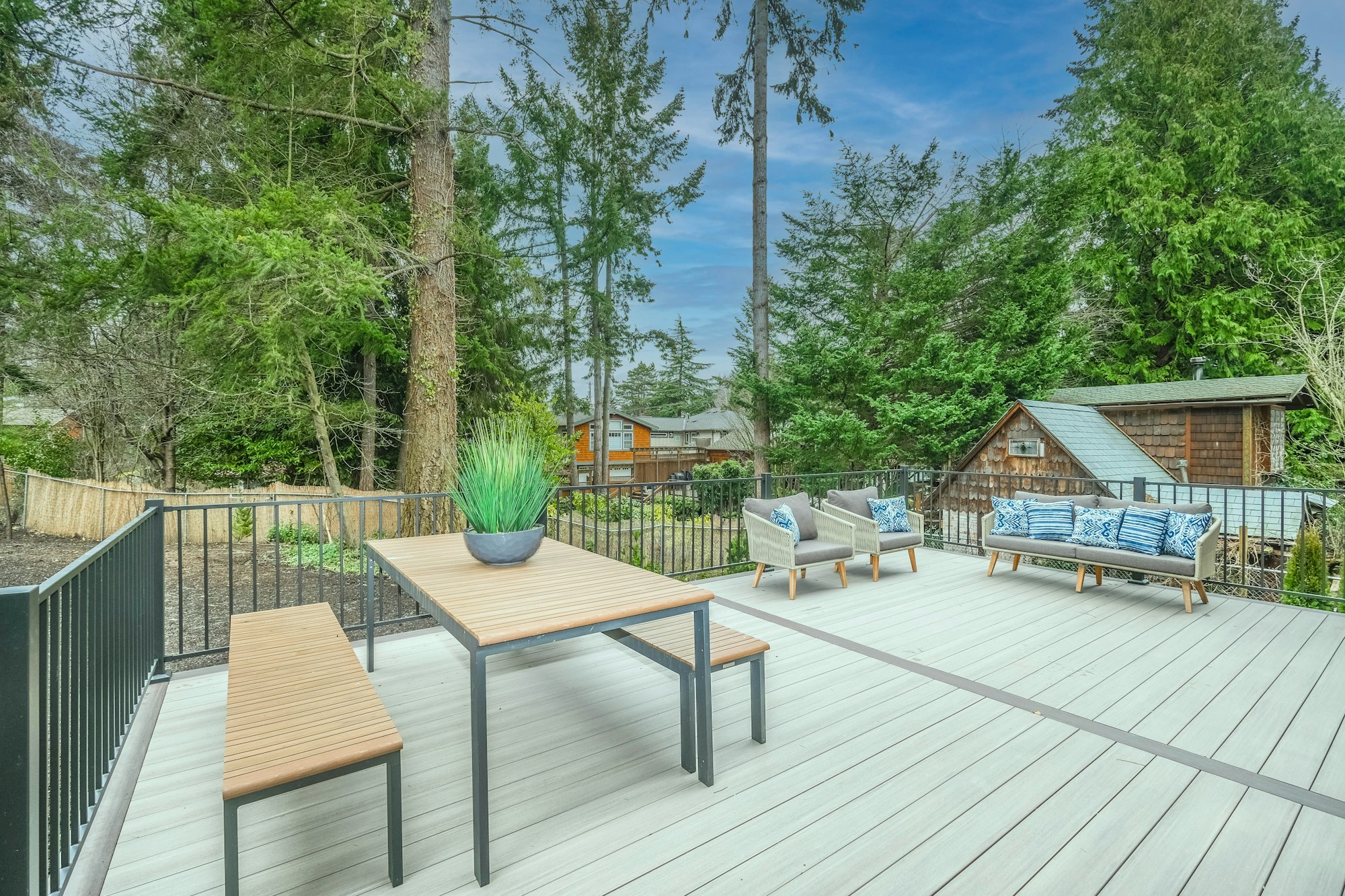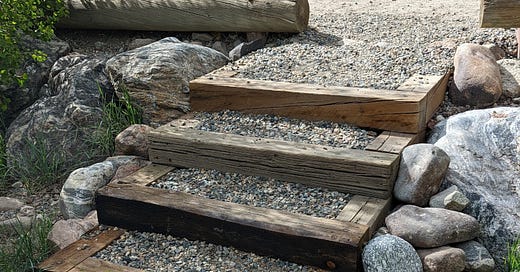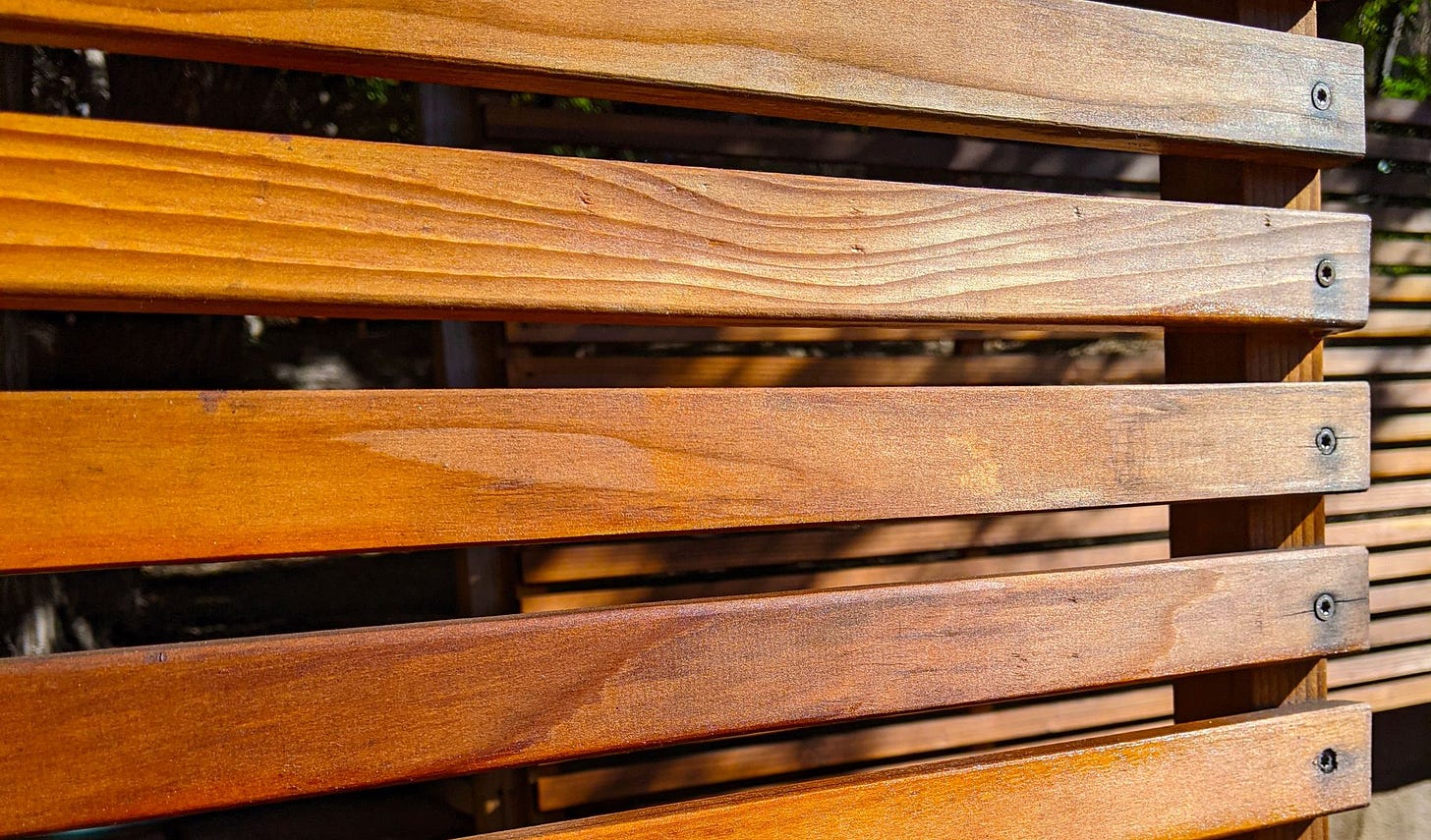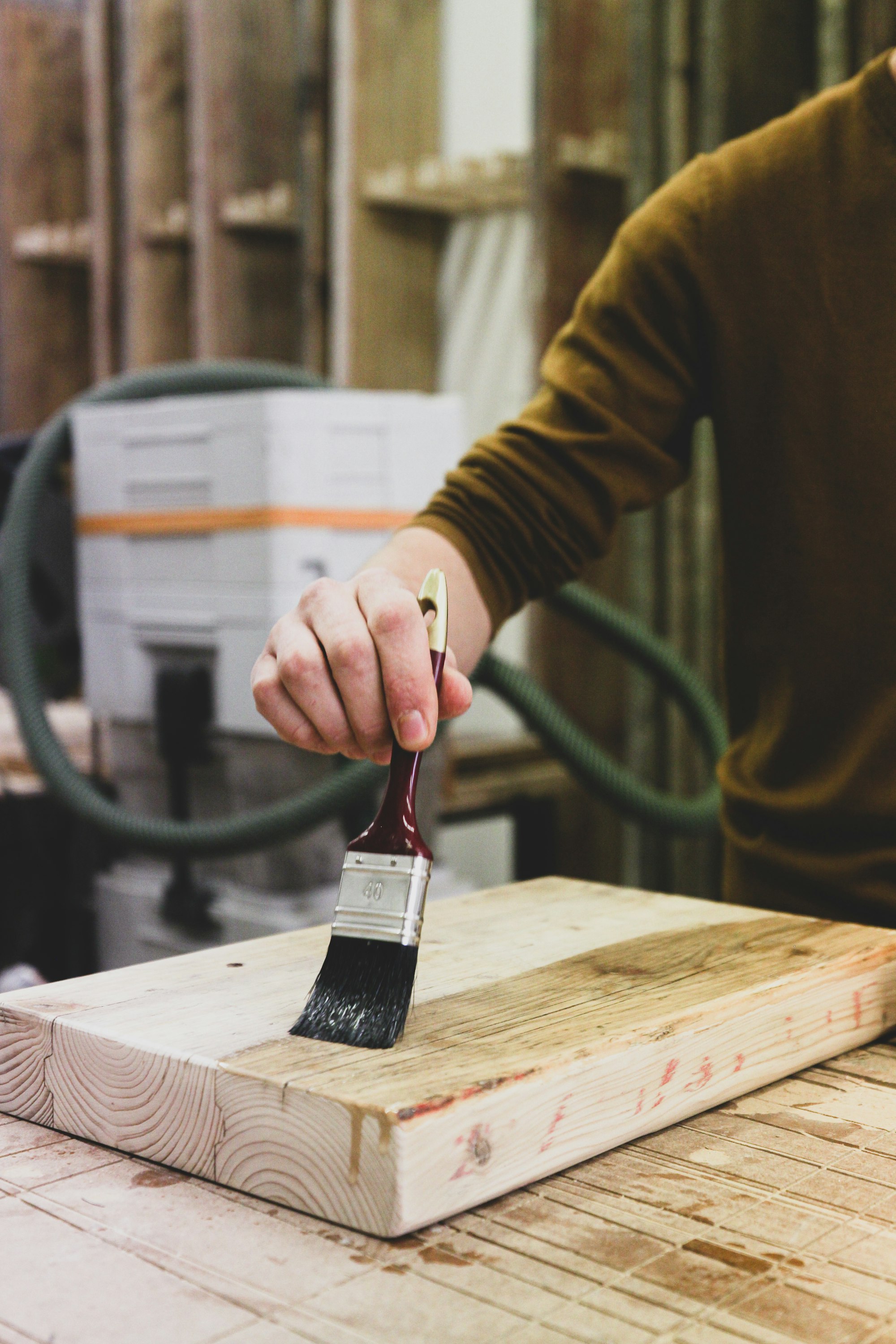Using Wood in your Garden Landscape
Wood is a useful and simple material for DIY landscapers to use in the Garden.
There are times when you need to build something in your garden using wood.
Wood is much easier to work with than bricks, stone or concrete. This is a great material for crafters that like to spend time in the garden.
Perhaps you are looking to build a small retaining wall, build steps set into the ground, or build a raised planter box. Wood is a good choice of material for all these projects.
What Type of wood should I use?
Wood is susceptible to rot and can be further damaged by wood boring insects when placed on the ground. There are some types of wood that are more rot-resistant and recommended for use in the garden:
Cedar Wood

Cedar wood from Western Red Cedar (Thuja plicata). Cedar wood contains Thujaplicin, a natural self-defence against fungus and insect infestation.
Cedar wood has an attractive grain and is aromatic. It is popular for use as fence pickets or siding on a gate. It is typically only sold as thin planks, making it a bad choice for structural projects.
Thujaplicin can cause allergic reactions and a filter-mask is a good idea when sanding or cutting this wood. Cedar Wood is a good choice for building small planter boxes.
Redwood
Redwood is another wood with natural resistance to rot and insect infestation. Redwood, as the name suggests, has a red hue that create a very stylish look when stained or sealed.
Redwood is available in thin planks as well as construction-friendly sizes. Many homes in the USA were built with Redwood frames in the early 20th century. The wood is so durable that many boards of redwood are reused when older homes are demolished.
Redwood is my preferred choice of wood for raised planters. The tannin in Redwood can dye your skin red, so always wear gloves when handling redwood.
PT Wood
PT stands for "pressure treated". PT wood is a natural wood that has been injected with preservatives. This type of wood is available in 'above-ground' or 'ground contact' grades - the label on the wood should state this. This type of wood is less attractive than redwood or cedar, and best used only for structural elements.
It can leach toxins into the ground so is not a good choice near plants grown for food.
Despite these disadvantages, it is very durable and the best choice for retaining walls and wooden steps set into soil. Often injected with copper but depending on where you live, different preservatives are used. Copper can cause metals to rust so make sure screws and nails are rated for this type of wood.
Composite Wood

Composite wood is a manufactured wood that is made with a combination of plastic and wood. Composite wood is sold with a finished texture and stain which makes for simpler installation than natural woods. This wood is very resistant to rot and requires little maintenance. This is the most expensive wood used in landscapes, so is generally used as a finish material, most often as deck boards.
Drainage
All wood rots eventually. If you are building something for longevity you must consider the drainage around your wooden features. For Decks and other wooden walkways moisture is drained through the gaps between planks. When using composite wood, the manufacturer will specify a min. gap to maintain the warranty.
For wood that contacts the soil there are some best practices to consider:
Drainage Rocks
3/4" (20mm) Gravel made from crushed rock is excellent at drawing away moisture from wood. Unlike pea-gravel, crushed rock gravel will lock into place with air gaps between the individual stones. The air gaps will drain rainwater or irrigation run-off through the rocks , which is then absorbed into the surrounding soil. I use these for any projects where I am placing wood directly on soil, sand, decomposed granite or any other unfinished surface.
Drainage for a Retaining Wall
For example, when placing the first row of wood for a retaining wall, I first dig out the soil beneath and fill it with at least a 3" (75mm) depth of gravel. This is tamped down using either a tamping tool or by walking on it to ensure a solid and level base for the wood.
For the uphill side of the retaining wall, I place a min. 2" (50mm) width of rocks against the wood to prevent the soil from coming into contact with the wood.
A tip for saving money: this type of gravel is used in large concrete projects. You can find this gravel for use as aggregate in the building supplies section of hardware stores for much cheaper than the rocks sold for use in the garden.
French Drain
In addition to Drainage Rocks, a perforated drain can be placed inside the gravel to carry away water to a specified point. This is called a French drain. A French drain is normally used to drain water from an area without having an exposed ditch, but can also be used to draw water away in other applications.
When used behind a wooden retaining wall, this will prevent the build up of hydro-static pressure building. Hydro-static pressure is created as the soil soaks up excess moisture causing it to expand. Hydro-static pressure is the most common cause of retaining walls to collapse and fail.
For a set of steps using wooden frames, the French Drain technique can be used to collect rainwater and send it downwards towards a point away from the steps. This protects the steps from sinking into the ground and prevents decay.
Wooden Posts
The most common use for wood in landscaping is as a post (e.g. fences, gates, signs, pergolas). It is common for posts to be set into concrete that is poured into a hole in the ground.
The downside to this is that if the wooden post rots, it is embedded into the ground and hard to repair. Furthermore, the concrete can trap moisture in the post underground causing it to rot, out of sight.
A better solution is to use 3/4" (20mm) gravel at the base of the post-hole. Pour a 3" (75mm) base of drainage rock gravel before placing the post and pour concrete last. The gravel will draw moisture away from the fence so that it dries out after the concrete has set.
Linseed Oil
There are various sealers that are advertised for use on the ground contact sides of wood. One of best sealers for this purpose is linseed oil, this is very effective at preventing decay.
Linseed oil is less likely to leach toxins into your soil, safe enough to use near edible plants. Be careful to only use raw linseed oil, not the boiled linseed oil as the latter is mixed with chemicals.
Raw linseed oil is not fast drying (can take 2-4 days to dry) so be sure to plan ahead if you are thinking of using this. This is an excellent decay prevention method when building wooden raised planters.
Sealers, Varnish, Paint
On the outside faces of natural wood used in landscaping, it is best to apply a protective finish. Exposure to sun and moisture can tarnish the wood even if it is resistant to decay. For PT wood or composite wood, this is not needed at time of installation, and is only applied for aesthetics.







